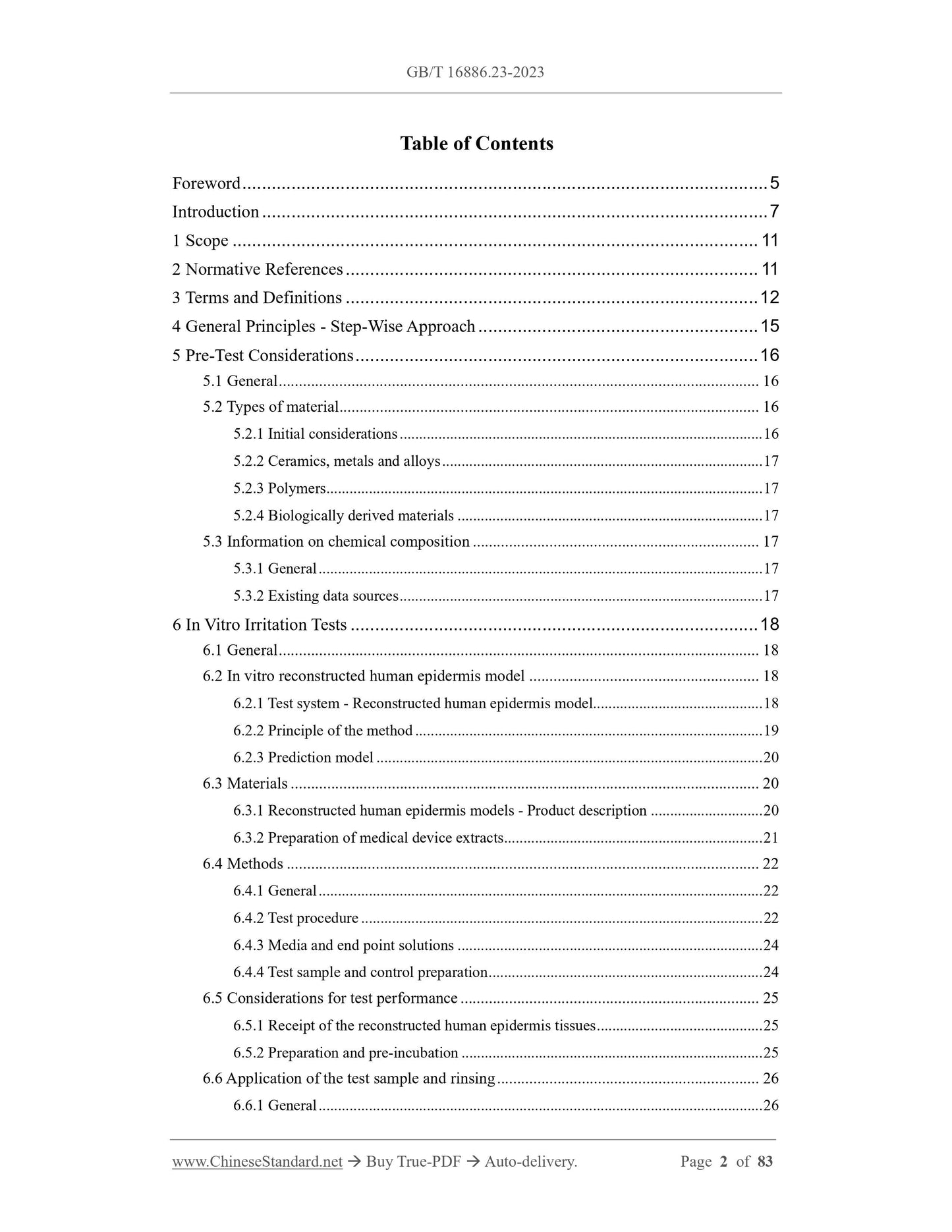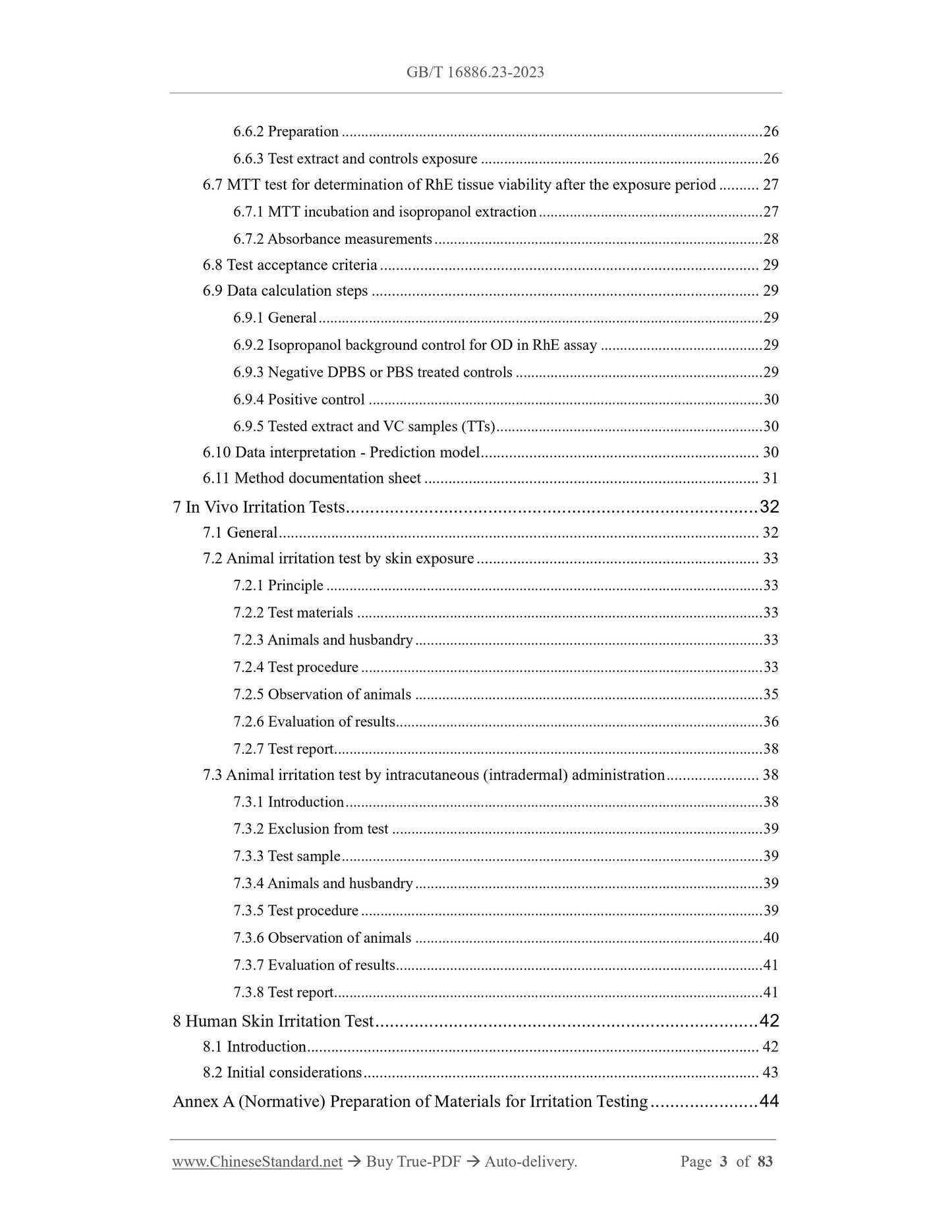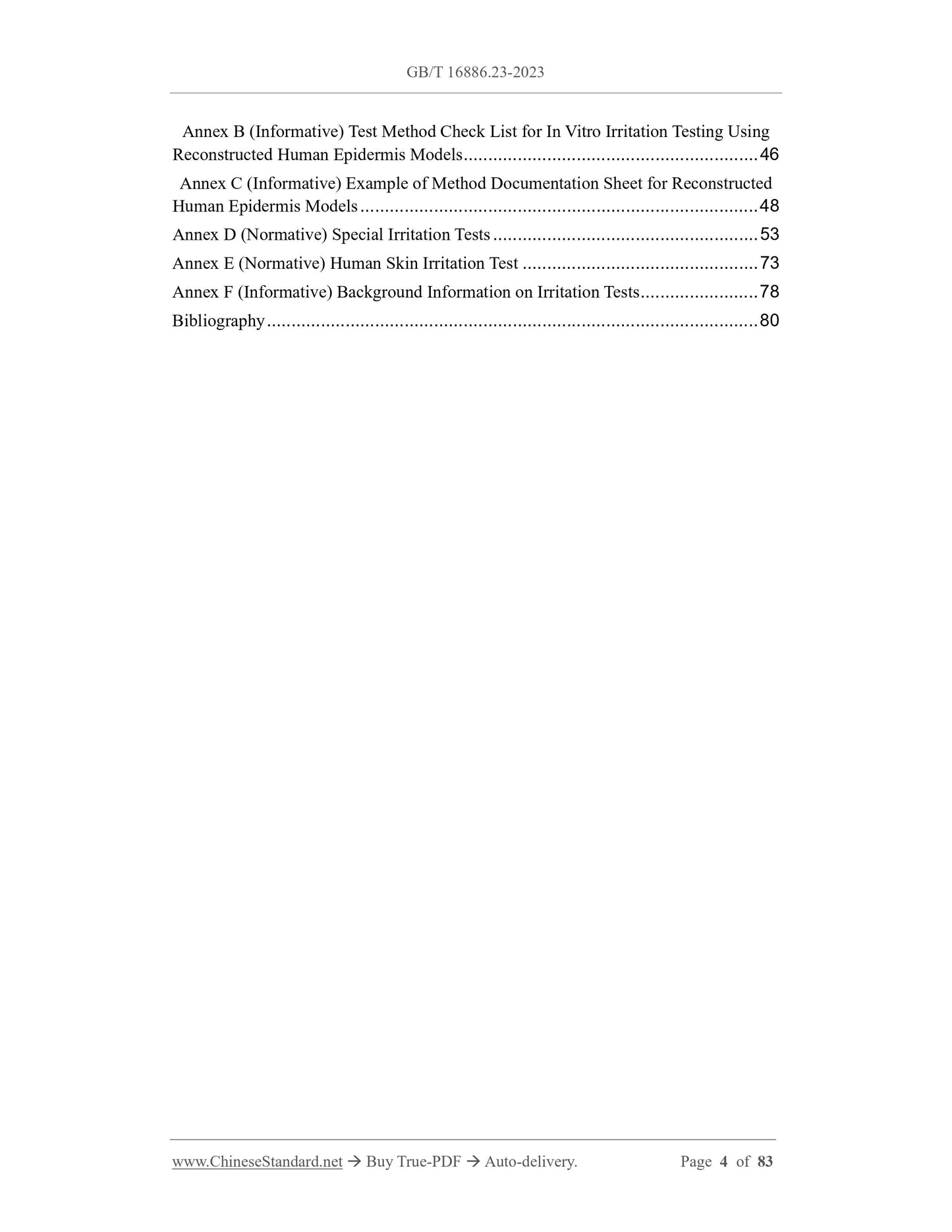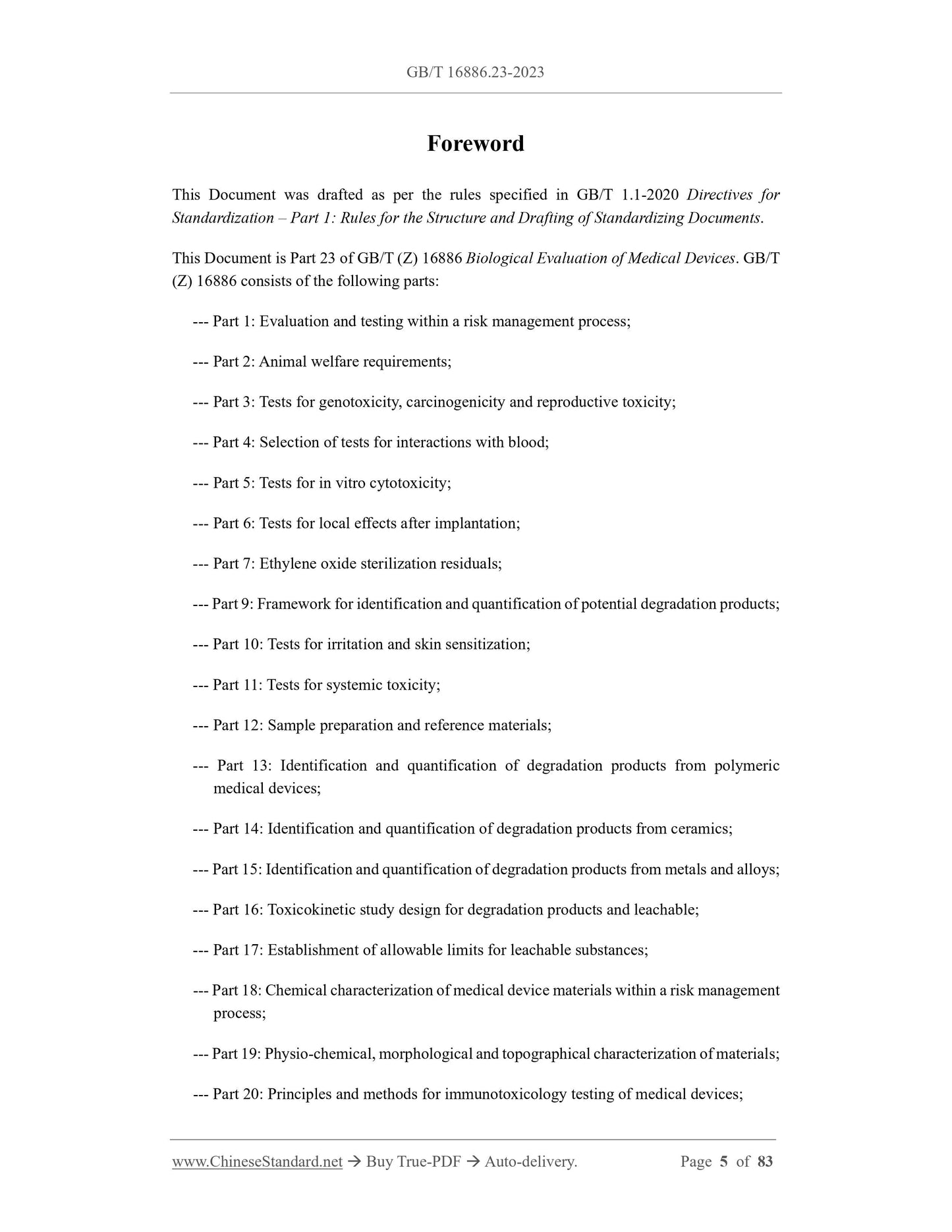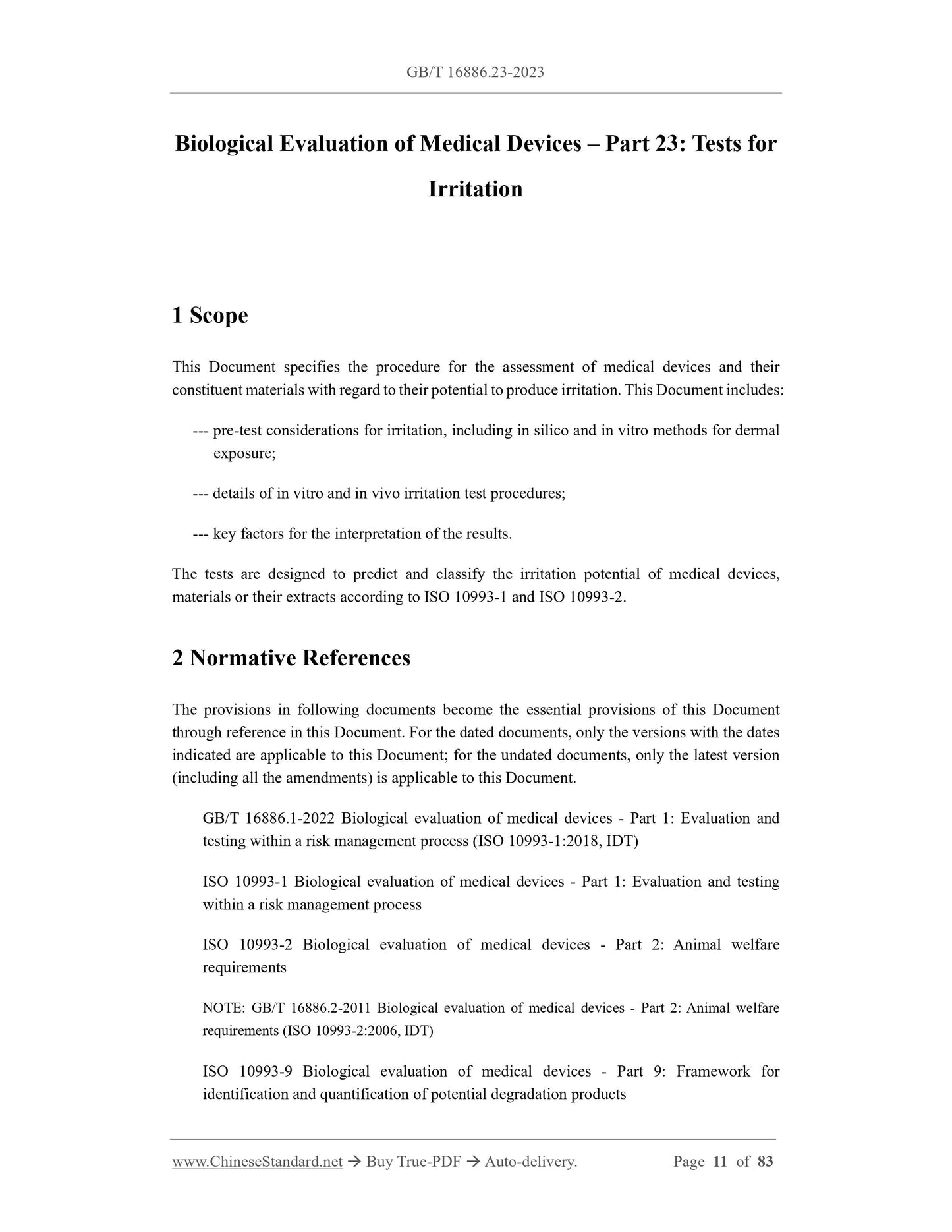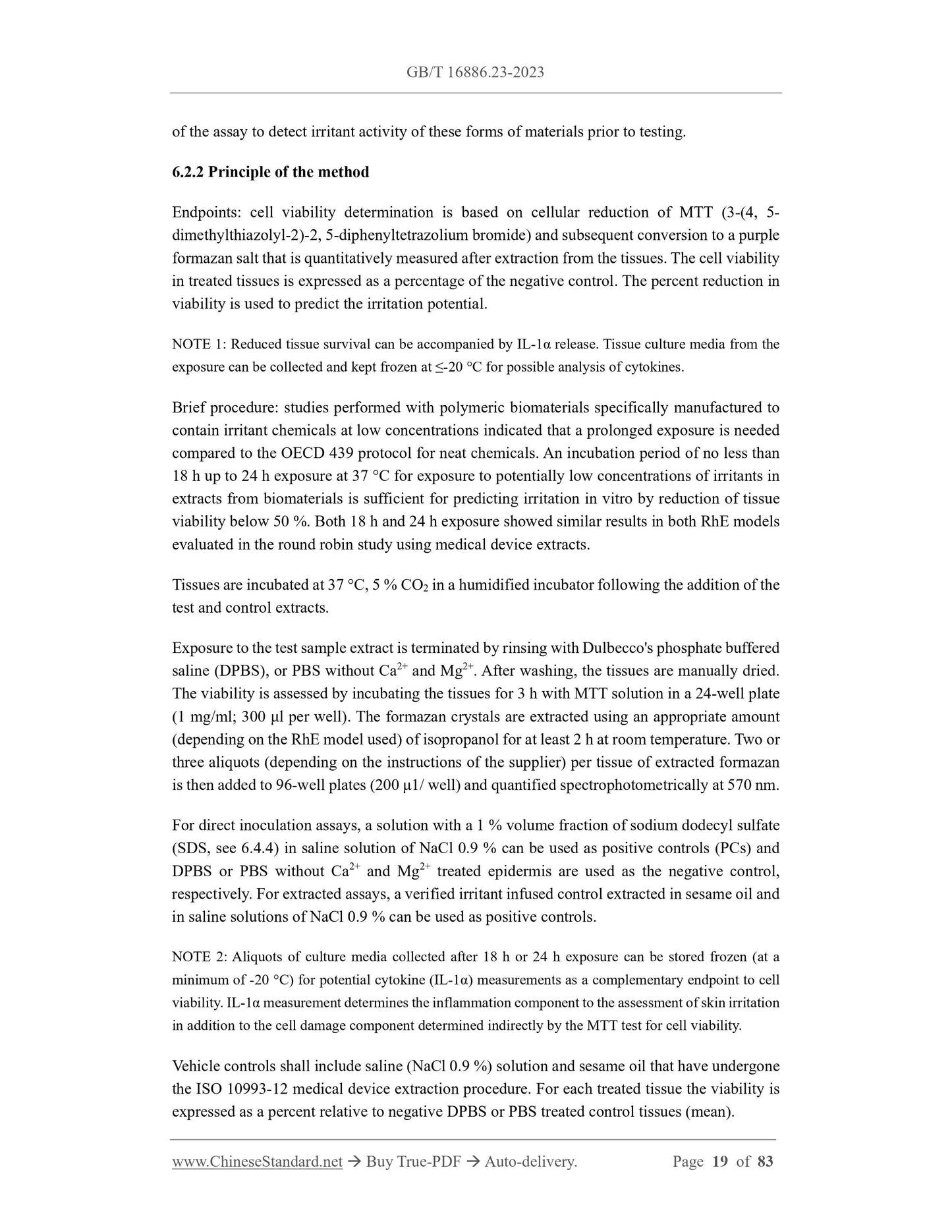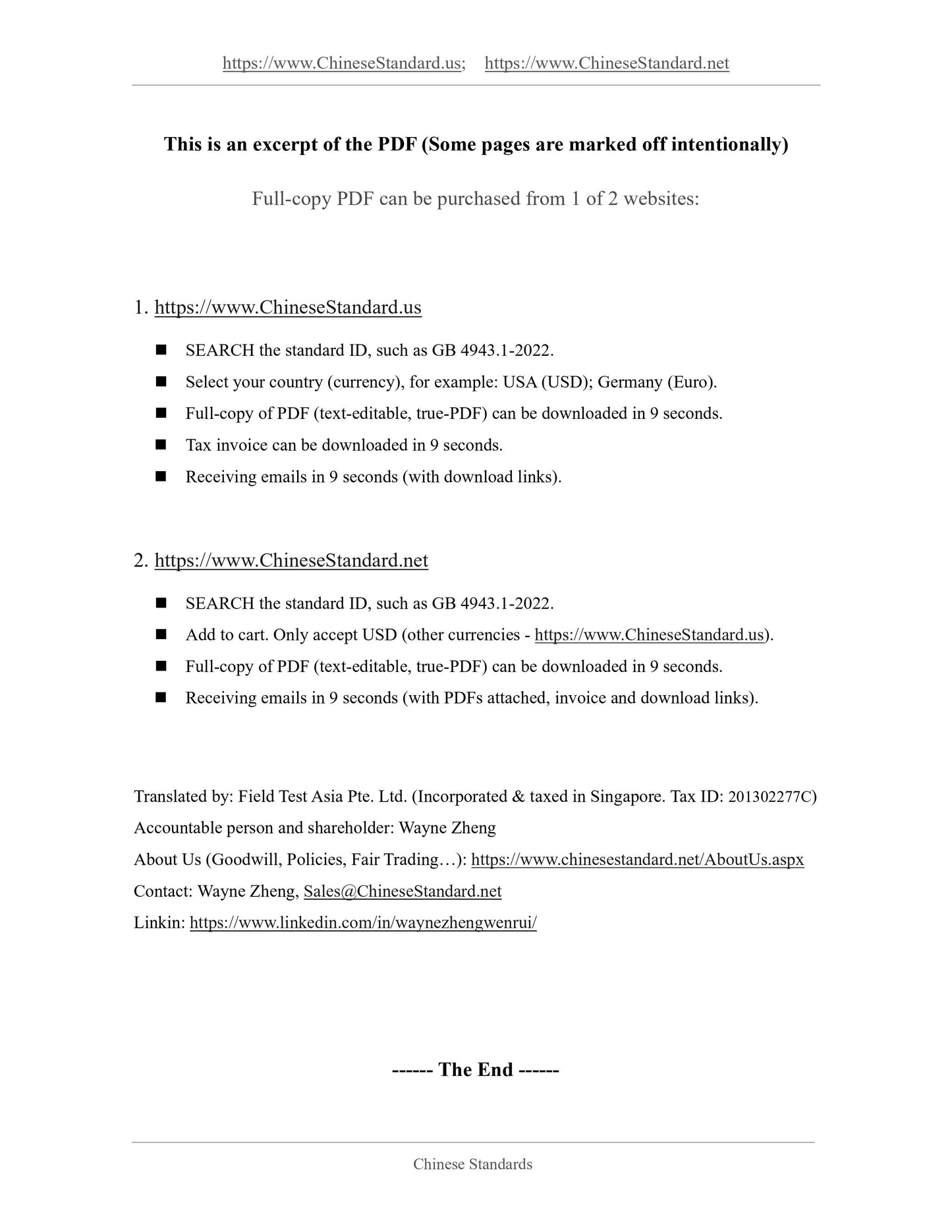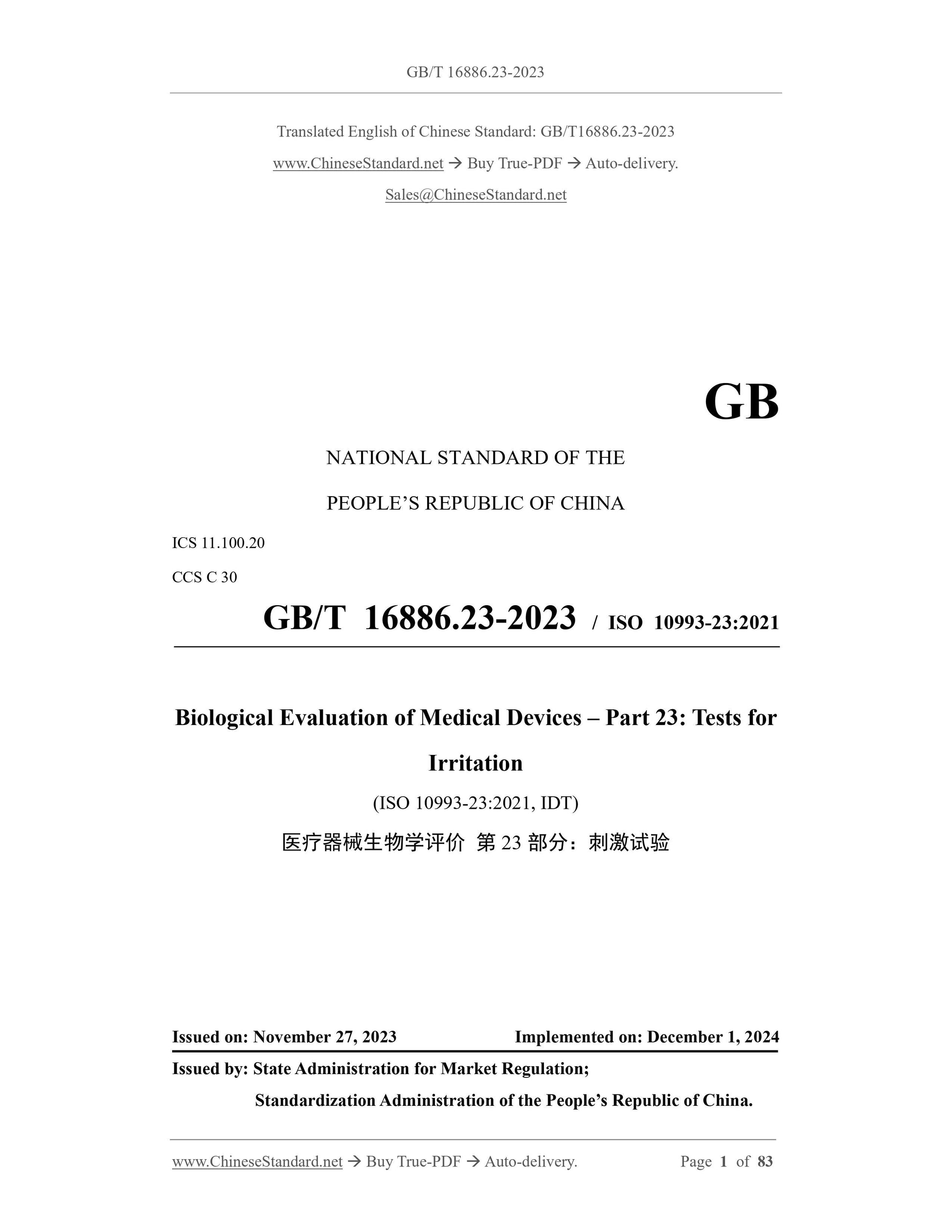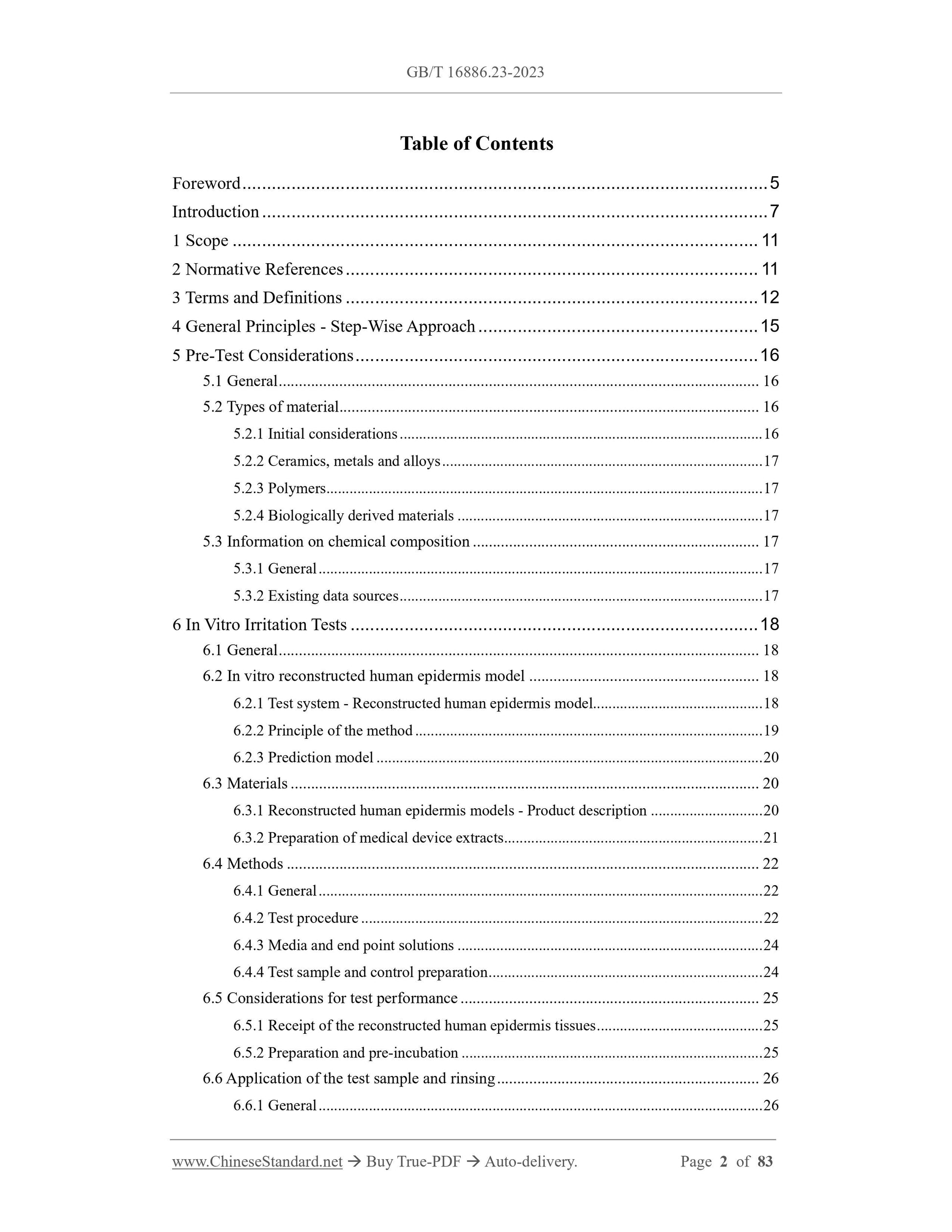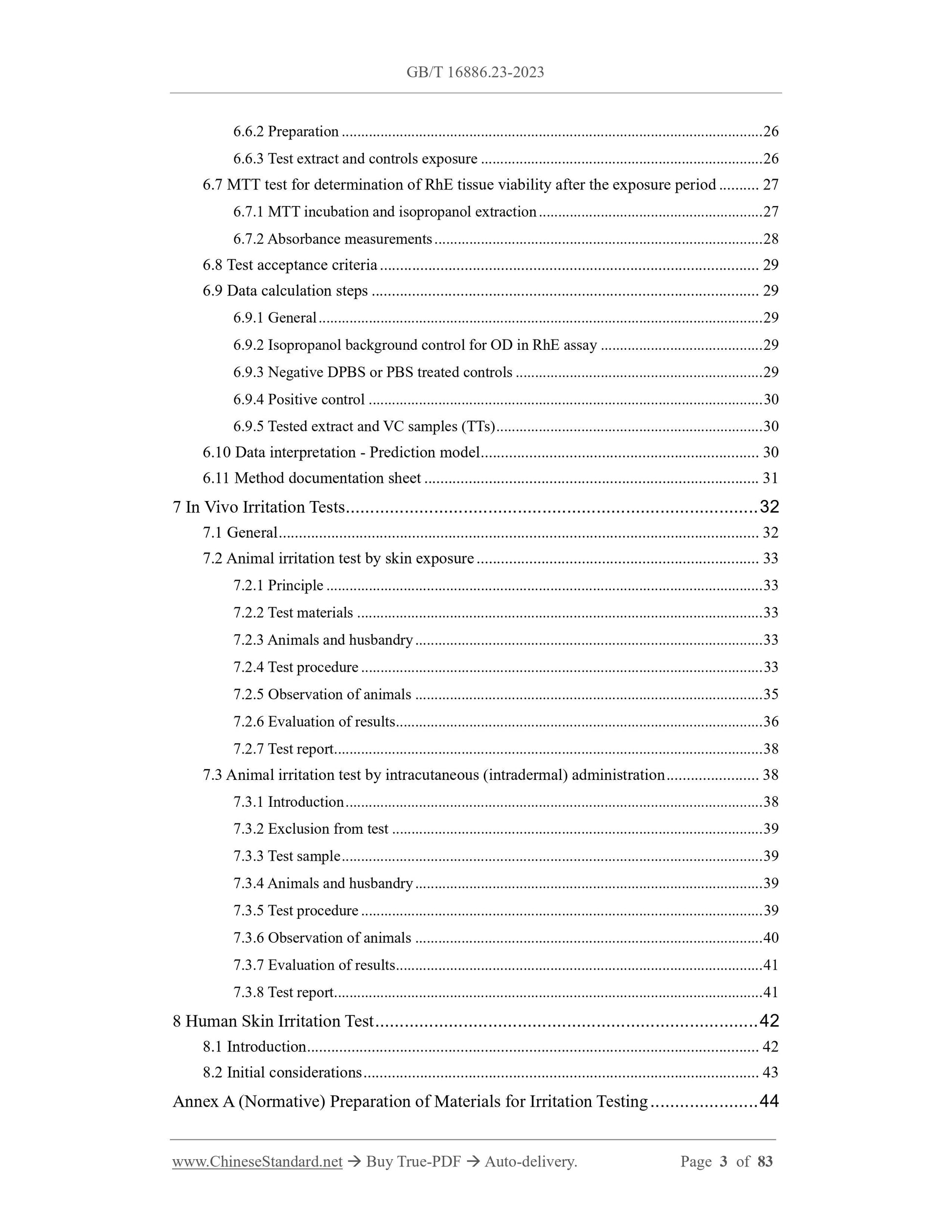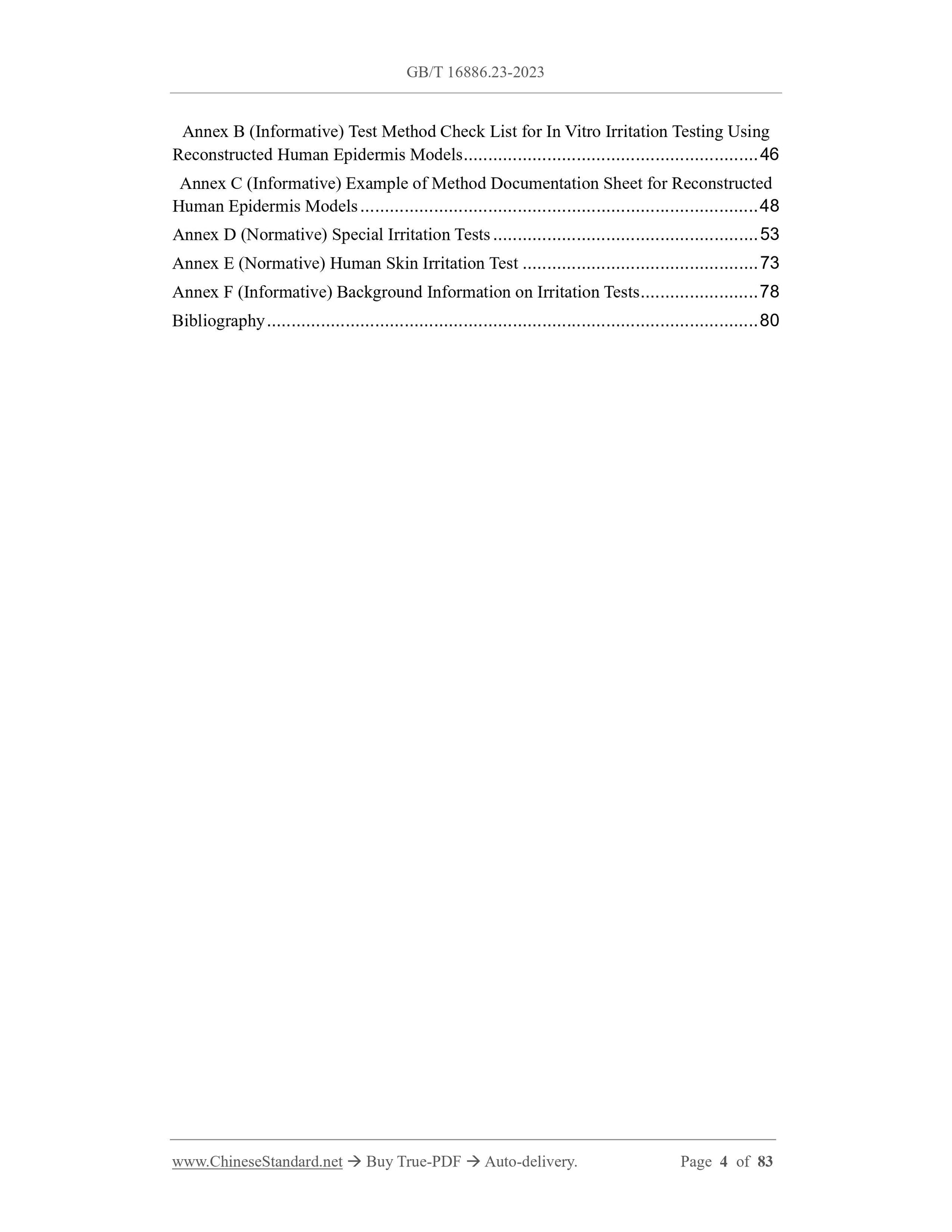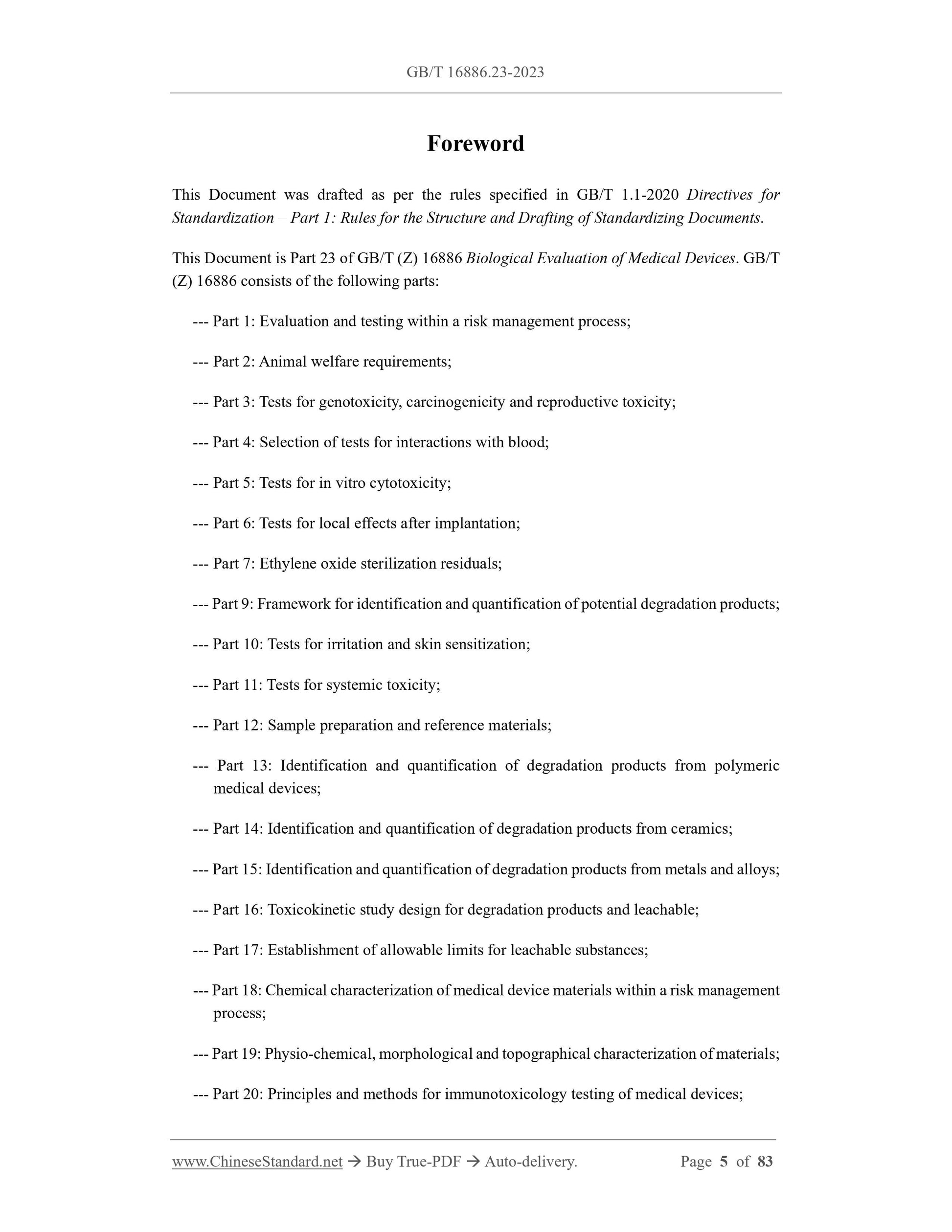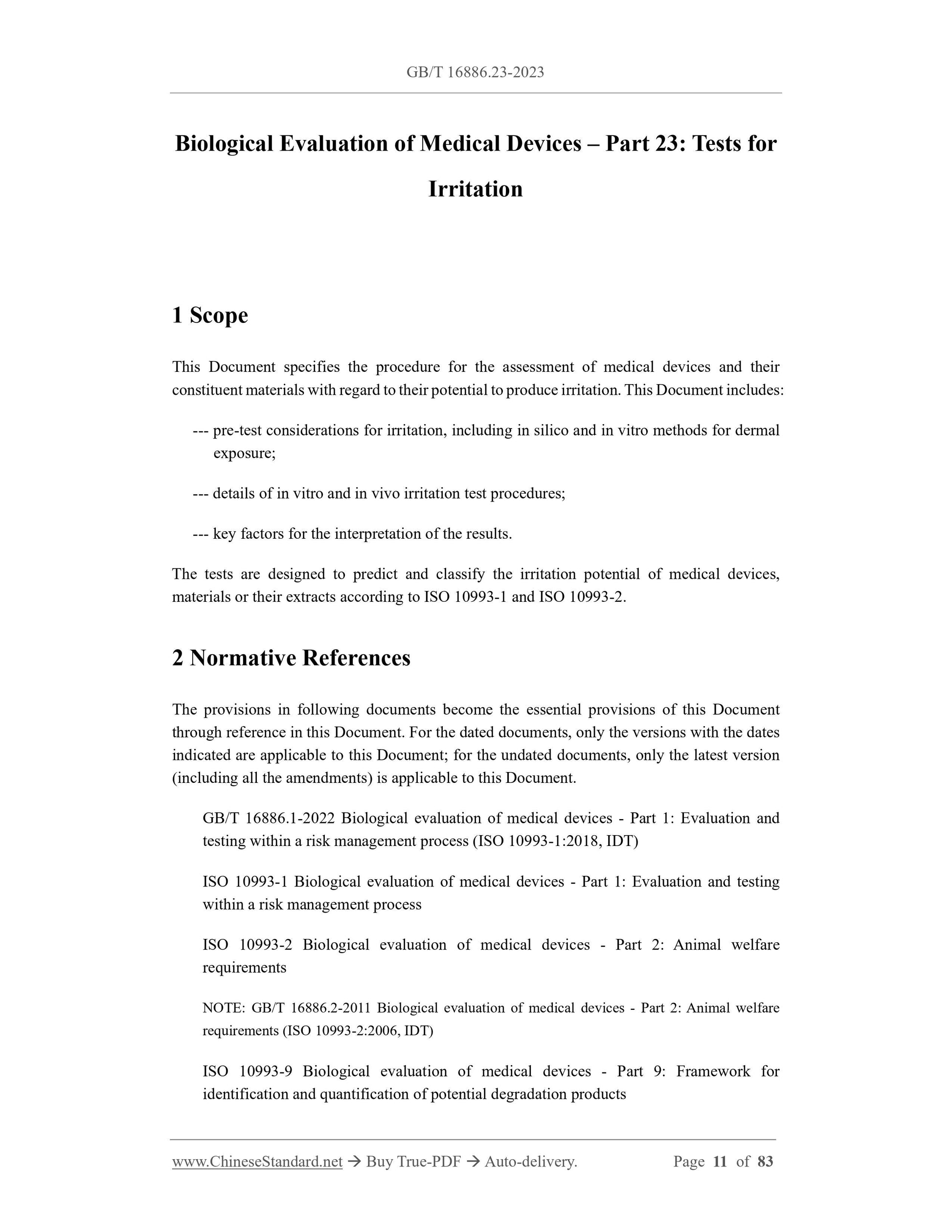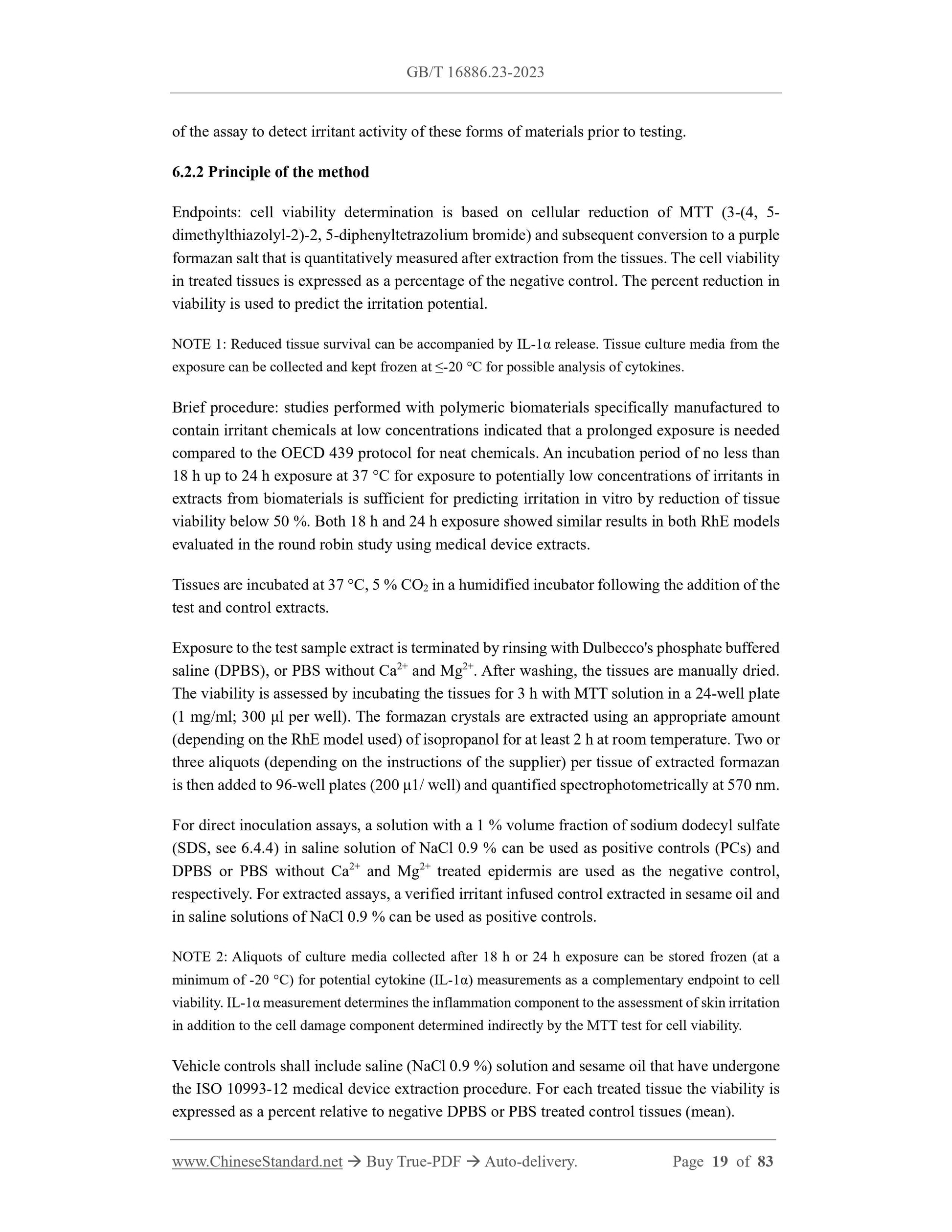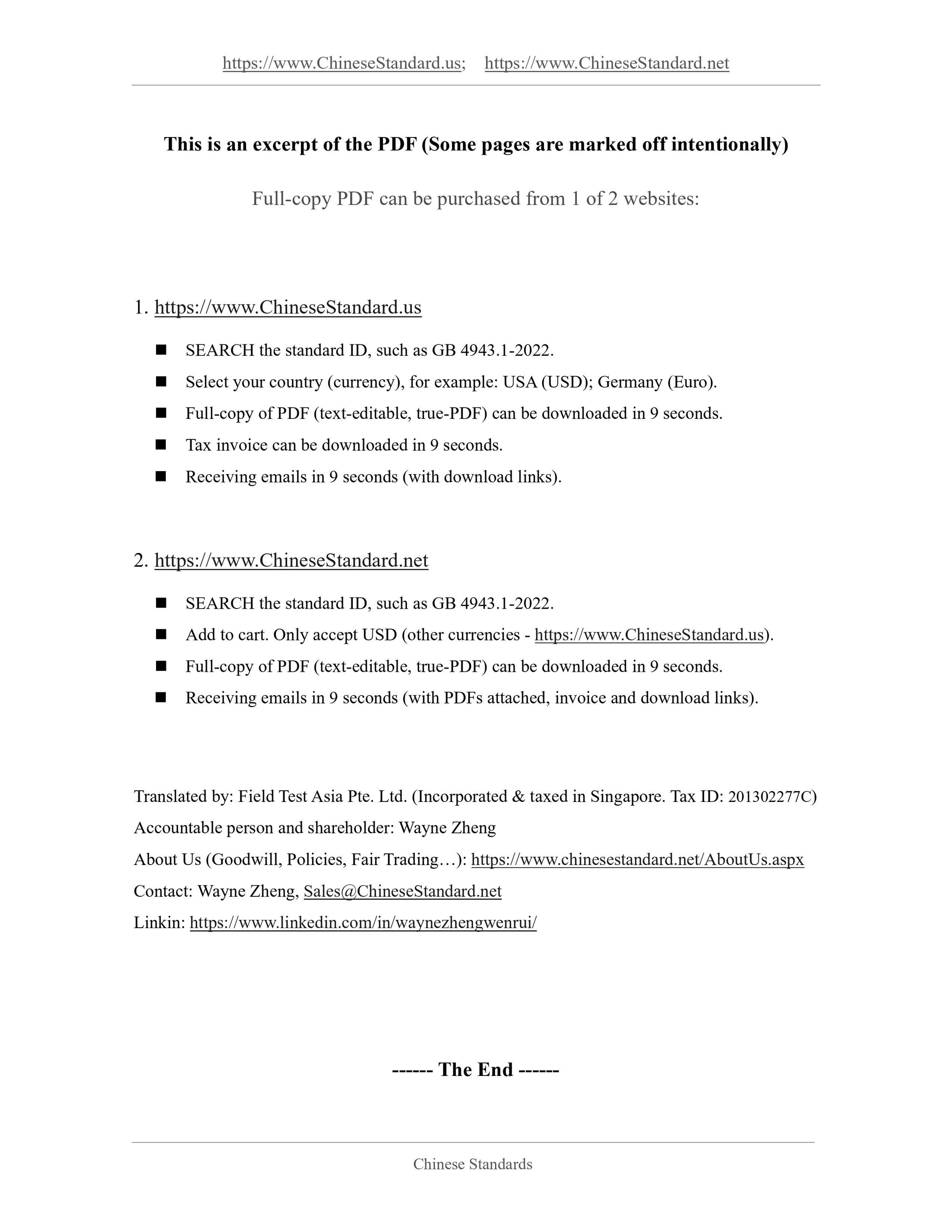1
/
of
8
www.ChineseStandard.us -- Field Test Asia Pte. Ltd.
GB/T 16886.23-2023 English PDF (GB/T16886.23-2023)
GB/T 16886.23-2023 English PDF (GB/T16886.23-2023)
Regular price
$995.00
Regular price
Sale price
$995.00
Unit price
/
per
Shipping calculated at checkout.
Couldn't load pickup availability
GB/T 16886.23-2023: Biological evaluation of medical devices - Part 23: Tests for irritation
Delivery: 9 seconds. Download (and Email) true-PDF + Invoice.Get Quotation: Click GB/T 16886.23-2023 (Self-service in 1-minute)
Newer / historical versions: GB/T 16886.23-2023
Preview True-PDF
Scope
This Document specifies the procedure for the assessment of medical devices and theirconstituent materials with regard to their potential to produce irritation. This Document includes.
Basic Data
| Standard ID | GB/T 16886.23-2023 (GB/T16886.23-2023) |
| Description (Translated English) | Biological evaluation of medical devices - Part 23: Tests for irritation |
| Sector / Industry | National Standard (Recommended) |
| Classification of Chinese Standard | C30 |
| Classification of International Standard | 11.100.20 |
| Word Count Estimation | 63,670 |
| Date of Issue | 2023-11-27 |
| Date of Implementation | 2024-12-01 |
| Issuing agency(ies) | State Administration for Market Regulation, China National Standardization Administration |
Share

